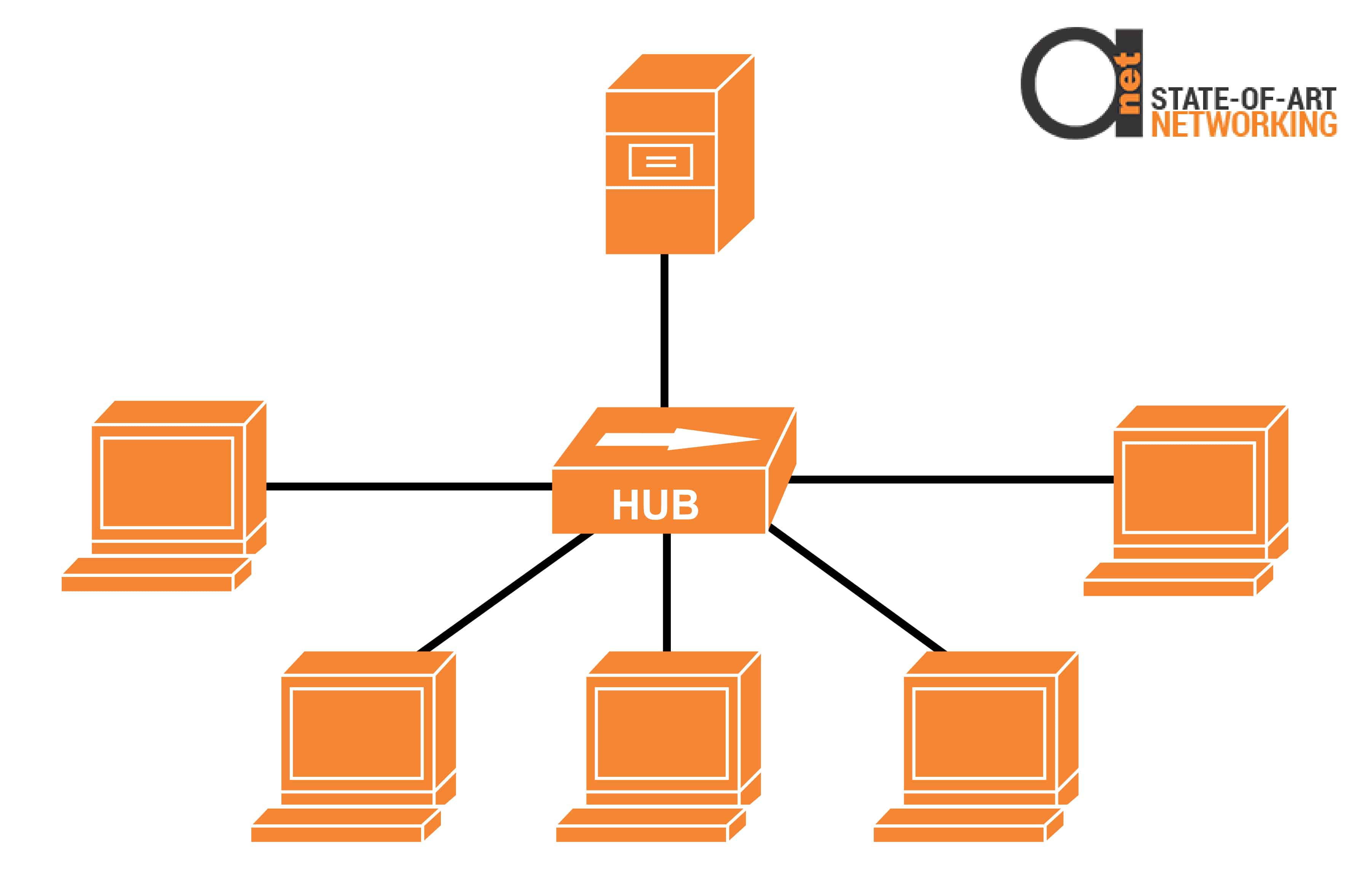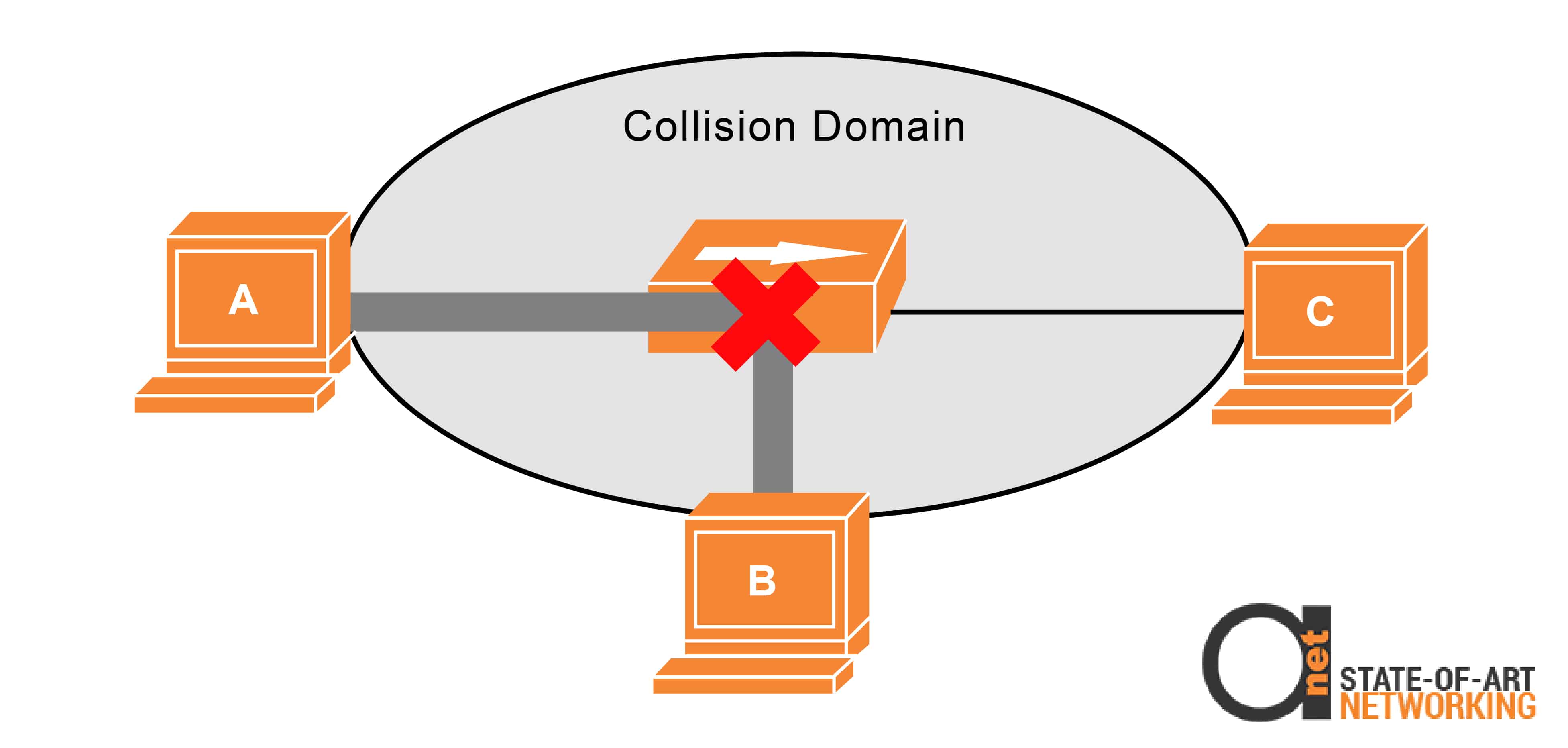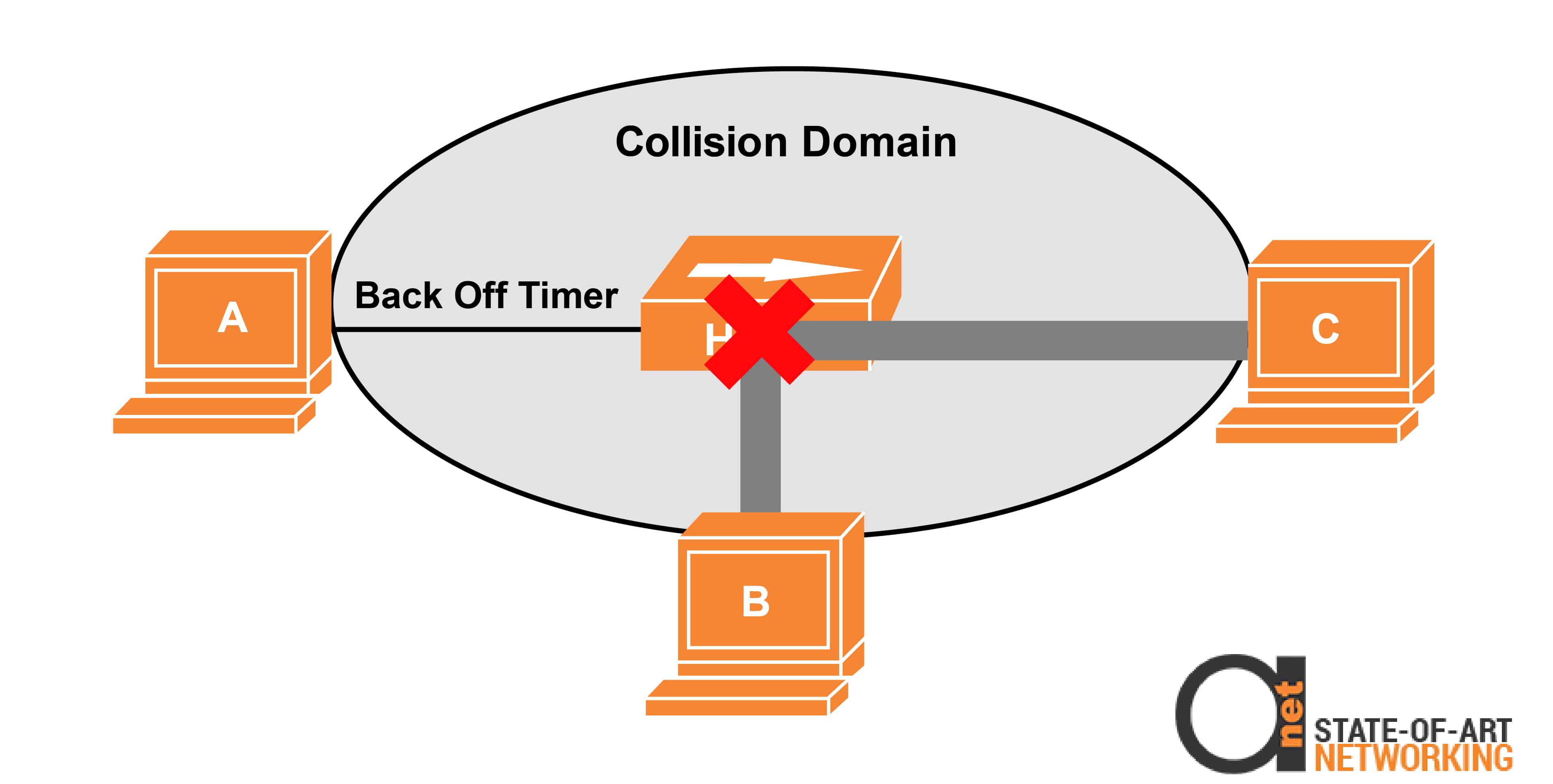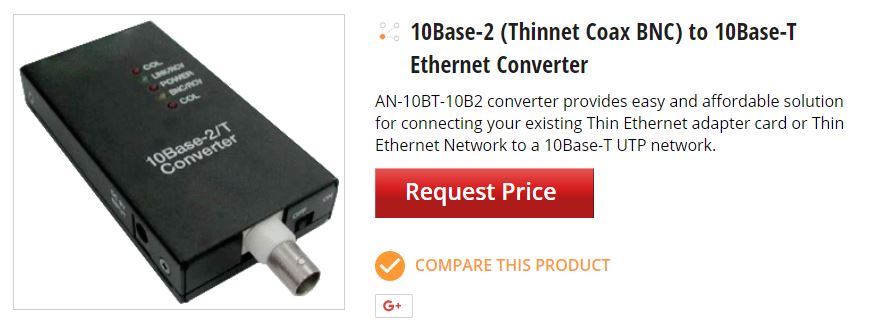Back in the day for Layer1, there were 10Base-2 (Thinnet) and 10BaseT (Thicknet). These types of layer one technologies used coaxial cable on shared bus systems. Really – just to repeat the layer one signals.
As technology progressed, 10Base-T was introduced to replace the old 10Base-2, two and 10Base-5 technologies, 10Base-T actually took advantage of existing UTP cables that were previously utilized for phone systems, so like Cat3 Ethernet cables can be utilized for 10BaseT.
At this moment, AD-net introduced a range of converters, that helped convert from 10Base-T to 10Base-5 or 10Base-T to 10Base-2 – and guess what, these are getting ordered even today, mid of 2018!
Figure 1: 10Base-2 to 10Base-T media converter
Another older Layer1 technology are hubs. Hubs are strictly layer one devices which were used to act as repeaters for centralized locations, so all they’re really doing is repeating the layer one signaling across between cables and hub devices.
To give you an idea of how hubs are used – just imagine how we use switches today. There needed to be a central point or aggregation for connecting multiple devices so that to get to our central point of the network, we wouldn’t have to run a cable for every network device.

Figure 2: Hub as central element of network and “aggregator” – since the name “hub”
Instead, you could aggregate all your connections onto a hub and then the hub could repeat that signaling between all of your network devices and save on cabling by extending hosts greater distances. Some more downsides to hubs are that they are one broadcast and one collision domain.
A collision domain is an area between devices that has the potential for network collisions. If computer a where to send traffic onto the network at the same time as B, since they’re on the same collision domain, then there now we’re traffic could collide and actually cause network collisions, so the less collision domains you have the better and every hub connection since it’s all just layer one with no intelligent decisions.

Figure 3: All devices that are connected to same hub, are in fact in same collision domain
It’s one big collision domain. Of course, on our layer two switches that we use today. Each interface is its own collision domain, so the more collision domains the better one hubs were used and collisions were a potential problem on multi-access networks.
There was something invented to help alleviate collisions on networks. Carrier sense multi-access with collision detection was created to avoid land collisions. It uses wait and listen to before sending mechanisms as well as backoff timers.
If collisions occurred, CSMA/CD works by first off, having networked devices listened before they send traffic onto the network, and then once the collision domain is finally clear, then the device send data onto the network in other way for devices to avoid collisions as random back off timers when there is a collision on the network, devices are informed with a jamming signal.
Once the device, here’s the signal that there’s been a collision, it will start a random backoff timer and it will not forward traffic until the timer expires. This can help prevent future collisions so that devices are not sending data at the same time.

Figure 4: Back-off Timer to eliminate collisions in same collision domain



